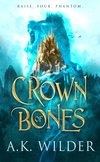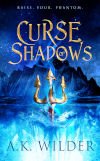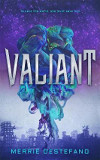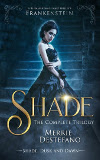 |
| Dune by Frank Herbert - Novel Poster 1965 |
Today I want to explore the impact environment can have on a story. From subtle to profound, I think you'll find there is more than meets the eye...
First off, think of stories like Dune, Frank Herbert's SFF novel recently produced as a Netflix Series. I mean, Dune! The storms that cover rich resources, the sandworms that devour all and pose a constant risk to life and limb?
Or maybe you remember the dangers on Pern, the planet where 'threads' fall from the sky and like acid, devour anything organic. Anything!
 |
| The White Dragon - art by the Unicorn Lady |
You might say the environment, in these cases, takes the lead role in the plot, culture and potential outcomes of a political or simply survival nature.
If you still aren't convinced, try a hypothetical scenario that involves a team of scientists colonizing Jupiter. There are, of course, issues of atmosphere, gravity, temperature and distance from the home world. But what if the colony landed more than five hundred years ago...
BEFORE the storm - now known as the 'red spot' - developed? That red circle turns out, for real, to be ten-thousand miles wide and gaining velocity over the centuries. Suddenly this story has a built-in antagonist to rival the sandworms on Dune or the deadly Thread on Pern.
 |
| Jupiter's Red Spot data collected by NASA's Juno spacecraft |
The Lake House, as per the blurb:
Claire’s grown up triple-checking locks. Counting her steps. Second-guessing every decision. It’s just how she’s wired – her worst-case scenarios never actually come true.
Until she arrives at an off-the-grid summer camp to find a blackened, burned husk instead of a lodge – and no survivors, except her and two other late arrivals: Reyva and Mariana.
When the three girls find a dead body in the woods, they realize none of this is an accident. Someone, something, is hunting them. Something that hides in the shadows. Something that refuses to let them leave....
Can I say right away that the writing is brilliant and...it's scary. Very scary!
Part of what makes it so is the environment - the huge, murky lake surrounded by endless, dark and thick forest. Not a soul in sight.. but did you hear that? It would be impossible to achieve the intensity in, say, a populated city or suburbia. The environment here holds sway.
***
When Dark Roots Hunt has a sense of foreboding and dread to it as well. From the back blurb:
Don't go out onto the lake. Wyann trees search the shallows to spear passing prey with their roots. Giant water-ants hunt anything that moves on the water-skin. Sala's village survives hidden behind a wall of poisonous ivy, because everyone agrees: don't go out onto the lake.
But when her village refuses to listen to sense, and continues squeezing beautiful pond-bred 'keeiling' fish to death for their precious saliva oils, Sala has no choice. She will risk it all to prove herself one last time, else leave everything behind for the dark shaded swamps beneath the towering hillfarms of Palude.
At least that's the plan before a strange comet crosses the night sky, throwing her and her pet pointer into a race through wyann-infested swampland to unearth long-hidden truths and stir rivalries into a terrifying conflict set to change the world of Palude forever. Sala must do whatever it takes to face the truth of who she is: to save her village, to save her family, to save herself.
If only they had listened.
This story is compelling, impossible to put down, and as you read, you quickly find that the environment is as much a key to the mysteries as the people who try to survive it.
I invite you to consider the environment in a new way as you read, to see if it too is a character with needs and wants and calamity to offer.
If you find one or two outstanding, I would love to hear about it!
xxKim


































